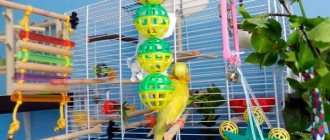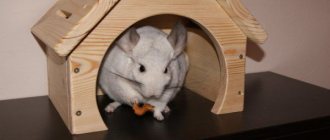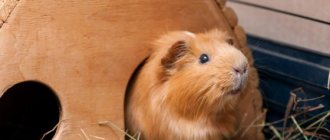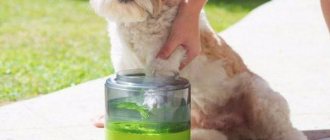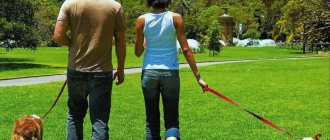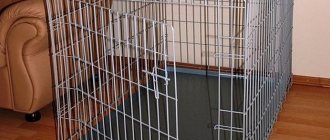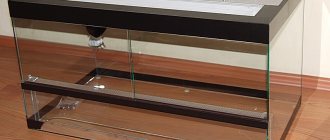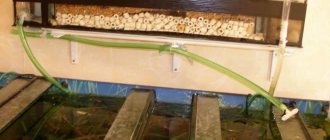Chinchillas are naturally very active animals. Pet owners often place various toys in their cage. It is worth noting that chinchillas are shy animals, so if you want to play with them, you will have to first tame the animals into your hands. You need to give some time for the chinchilla to get used to its new environment.
You should not remove the chinchilla from the house yourself. Open the cage and allow the animal to come out when it is ready. A house for rodents is a place where they feel safe.
The chinchilla will gradually get used to you and will play with you. Before releasing the animal into the apartment, it is necessary to remove in advance objects that can be traumatic for the pet: remove valuable and sharp objects.
You should not practice walking your chinchilla on the street. With a sudden change in environment, the animal may experience severe stress due to new smells and sounds, which will negatively affect the chinchilla’s overall well-being. There is also a high risk of contracting parasites or disease.
Types of toys for chinchillas
Toys for furry rodents are made from different materials, but they all have one common requirement - safety. Therefore, you should not buy and use toys from:
- Plastics,
- Rubbers,
- Plexiglas,
- Cardboard, foam or paper,
- Any material with a high content of gels, paints or varnishes,
- Any material containing cement or lime.
Most often, toys for animals are made from ceramics, wood, stone, metal and plant fibers.
Wooden toys must not contain any traces of paint and be made from approved types of wood:
- Beech,
- And you,
- Poplars,
- Apple trees,
- Cherries,
- Birches.
Wooden toys can be either static - attached to the floor or walls, or free-lying. All kinds of swings and ladders, houses, shelves, labyrinths and ladders are most often made from wood.
When choosing a ceramic toy, you should carefully inspect it for the absence of sharp corners or protrusions. You can use flower pots, drainage pipes of suitable diameter and other pottery items.
Stone toys are designed to grind down constantly growing teeth, which means they should not contain dangerous inclusions. Most often, stone toys are stones for grinding teeth. Sometimes they are shaped like a castle, a fruit or a vegetable.
All kinds of ropes, hammocks and ladders, ropes, bedding, baskets and bowls are made from plant fibers. The main condition is that the fabric must not be bleached or dyed.
Metal toys are represented by various running wheels.
Interesting ideas for arranging a cage
Many owners prefer to equip a chinchilla’s home to order or independently, based on the pet’s preferences.
These furry animals are good at jumping with the help of their developed hind legs. Therefore, shelves at different levels are attached to the walls of their home for jumping.
The maximum height of the shelf is 80 cm, so that if the animal accidentally falls from it, it will not be injured.
Between the shelves it is worth making several transitions in the form of bridges, tunnels, and stairs.
Tunnels are made of plastic pipes and wood. It is advisable to make the edge of metal, otherwise it will quickly be chewed off. With some effort, you can weave a tunnel from willow twigs.
An inclined stick with circles of steps made of wood attached to it, or a small board with low slats attached are suitable as a ladder.
Chinchillas love chewable toys. They are easily made from pieces of sticks and wooden circles, previously washed and dried. Holes are made in the pieces of wood, then they are strung in random order onto galvanized wire, a chain and hung in an accessible place.
To add interest to the hanging toy, you can attach a bell.
Watching chinchillas play and exercise is great fun. Especially knowing that joy is brought through your own hard work. Diversifying the life of pets and making it more fun is the task of a responsible owner.
Chinchillas differ from other rodents in their activity. The animals are in constant motion. In order to diversify their pets' everyday life, many breeders buy a variety of toys for their cages: ladders, hammocks, shelves, labyrinths and running wheels.
For chinchillas that are not kept in very large cages, a running wheel is a necessity. It provides the animals with good exercise and exercise.
In stores you can find a large selection of running wheels for chinchillas. They differ in price, color, material and manufacturer. The most common models are made of wood, plastic or metal. However, you can find both ceramic models and models made of plexiglass.
When choosing a wheel for your pet, you should pay special attention to the safety of the toy.
Regardless of the material, the wheel should not have any sharp edges or protruding parts, no traces of paint, no cracks or chips. You should also be careful when choosing the size. It is recommended for an adult chinchilla to buy wheels with a diameter of at least forty centimeters. For young animals, a smaller size is suitable - thirty or thirty-two centimeters.
The most convenient and practical are plastic wheels. They are stronger, more durable, and easier to clean. Plastic does not look attractive to the animal, so chinchillas usually do not chew it. However, most often plastic wheels are produced with a small diameter or are quite expensive.
A good alternative to plastic is metal. Metal wheels are available in two models:
- With mesh,
- With horizontal bars.
Many owners prefer the option with crossbars. The animal's paws can get stuck in the mesh, which can lead to injury. A wheel model with crossbars can also sometimes cause injury, so it is recommended to cover the wheel with thick denim fabric.
Wooden wheels most often have a small diameter and are suitable for young animals.
The downside is that the animals will gnaw the wooden parts and the toy will quickly become unusable.
Why does a chinchilla need toys?
Since chinchillas spend almost their entire life in a cage, the owner’s task is to diversify their pet’s leisure time as much as possible. Various toys come to his rescue that will make life in a confined space more fun. In addition, active animals will have no time for bad habits, such as plucking their fur.
What toys are needed
There are three types of toys that will surely be of interest to restless chinchillas:
- Moving. They are designed for active play both inside and outside the cage. These include various rotating wheels, balls, balls and bouncers.
- Static. This includes stairs, tunnels, hammocks and swings. With their help, you can decorate the cage, as well as wisely use the space inside it.
- Handy items. They come to the rescue when you have not yet decided on the taste of your animal, or when all the available toys in the cage are boring to him. In every apartment there will always be a couple of objects that the chinchilla will be interested in playing with.
How to play with a chinchilla correctly
Despite their activity, chinchillas are rather shy animals. It takes them a long time to get used to the new environment and owner. It will take you time to train your pet.
This needs to be done gradually. To play with your pet, you first need to prepare the room: remove excess furniture (a rodent can hide and get stuck under it), hide objects that should remain intact (chinchillas tend to gnaw and bite everything in their path).
Everything has its time
Before offering toys to your chinchilla, create a comfortable environment for the animal. The animal must get used to the environment and its owners. If you are going to let your pet out of the cage, you need to clean the room: there should be nothing unnecessary on the floor, much less dangerous for the rodent.
To begin with, you should stay away from the chinchilla - give him the opportunity to explore the new space on his own. Under no circumstances should you frighten the animal with loud sounds or sudden movements; you should not turn the lights on or off. It is also very important for the animal that the path home (to the cage) always remains open.
When the rodent gets used to the environment and gets a little “bored”, it will begin to bite and pinch everything in its path. At this time, you can offer him new toys. Just be prepared for the fact that the animal will remain indifferent to the “gift” - it will decide for itself what it likes to play and what it doesn’t.
What toys are suitable for chinchillas:
- moving;
- static (interior);
- from scrap materials.
As for the cage, it should also have toys - this is a prerequisite. The fact is that an active animal needs to constantly expend energy. And if he doesn’t find something to do, he will start chewing his fur out of boredom. Alas, these small animals are also susceptible to bad habits (the problem is partly solved by chinchilla training).
What does a chinchilla need in a cage?
Before you start buying stuff for your rodent’s home, it is important to decide what will be a basic necessity and what will provide leisure for your pet. This will allow you to avoid wasting money and also provide your baby with the accessories that are truly necessary.
Essential items are considered to be:
- feeder;
- sennitsa;
- drinking bowl;
- shelter house;
- bathing suit;
- tray;
- stone.
In addition to all of the above, chinchillas definitely need toys:
- running wheel;
- tunnels;
- wooden fixtures.
If rodents have nowhere to put their energy, then bad habits may appear in their behavior.
Thus, it was noticed that an animal, unable to move, began to gnaw out scraps of its own fur out of boredom.
Static toys
These entertainments can also be classified as interior entertainment, since they look less like toys and more like pieces of furniture in your pet’s home. Nevertheless, they allow the animal to maintain activity at the proper level.
Shelves
Shelves are a universal exercise machine for rodents that have weak front legs and strong hind legs. They allow the animal to jump, quickly changing its location. The optimal height for the shelf is 80 centimeters. Shelf made of natural wood - Linden! (not pine!! which has a lot of harmful resin emissions). You don't have to worry about your pet, Linden is one of the most useful tree species! For example, the well-known linden tea has long been used in the treatment of many ailments. The most natural tooth grinder is wood! And a tasty and healthy shelf will last for a long time.
STICKS AND STAIRS
An ordinary wooden stick placed in a cage causes no less delight in the tailed ones; it can be rolled, chewed, and climbed up (if you place it between the floor and the shelf). The ladder is a modernized version of the stick that performs similar functions.
Tunnels
The tunnel is an interesting means of transportation that will add variety to your cage; some chinchillas even like to rest there or hide in pipes of different diameters, making their way through them and running after each other. The tunnels can be of any size, but at least 30-40 centimeters in diameter, so that the pet does not get stuck inside.
Tunnels are mainly made of plastic and wood, and the second option must have an iron edging so that the chinchilla cannot chew the edges. Some manufacturers offer a whole network of tunnel passages made of plastic, which can be disassembled and assembled, giving the shape as desired.
Why do Schefflera leaves fall? What should I do if my plant has brown spots on its leaves?
Tunnel system
Translucent plastic is recommended as a material: the animal will feel safe there. You can always find a rodent who has simply fallen asleep inside the exercise machine, without fear that he is stuck there. It is best to choose tunnels from transparent materials so that the chinchilla can always be found.
Hammocks
By installing this device inside the cage, you will see how much your chinchilla will love it. In this mini-bed you can not only relax, but also swing. It is worth noting that the tastes and characters of these animals are just as different as ours. As for hammocks, all animals like them, but some like closed models, others prefer to relax in open hammocks, while others cannot be kicked out of hammocks - pipes Thus, you have the opportunity to save money and show your love and care in your creativity by trying to sew all three hammock models yourself, and your little animal will choose and evaluate the most successful one.
You can, of course, hang a hammock on thin satin ribbons, if you have a stock of such ribbon, about the size of a wagon, it is best to find a metal chain that the chinchilla will not chew through.
We figured out the fastening, but to sew a hammock for your chinchilla you will need:
- thick denim - a cut of 100 by 30 centimeters, or just a piece of denim pants;
- thick threads;
- needle with a large eye;
- scissors.
With the trouser leg, everything is simple, you just need to fold it on both sides, if you have a piece of denim for work, then you need to first sew it into a tube and then bend it. At both ends you need to make loops of fabric, and attach a pair of small carabiners to them, to which you attach a metal chain. That’s basically it, the hammock for your animal is ready.
Most commonly used materials:
- tree;
- thick fabric;
- bendable but durable plastic.
From scrap materials
It is not necessary to attract a pet with new products from the store - chinchillas are happy to pay attention to toys made from scrap materials. Sometimes you don't even need to do anything - just give them a rustling object that they can chew or roll. Use options such as:
- walnut - animals will roll it throughout the cage for a long time, enjoying the roar;
- a wooden thread spool is not only an interesting toy, but also a good teeth sharpener;
- a small piece of thick rope tied into a knot at one or both ends. Please remember that this product should be given with caution. Make sure that the long-eared animals do not try to swallow threads, which can damage the stomach.
DIY pet toy
Toys can be not only purchased. Chinchillas are quite smart animals and adapt a variety of objects for their games. Even a nut shell can become a furry pet's favorite toy. Some breeders prefer to make toys for chinchillas with their own hands. For the most popular option you will need:
- Metal chain from a hardware store,
- Several metal key rings,
- Branches of any permitted tree,
- Drill,
- Saw.
The twigs must be washed well and dried, preferably in the oven. The branches are sawn into bars and rounds. A hole is drilled in each of them, with a diameter equal to the diameter of the chain. A chain is threaded through all the branches, and key rings are attached to its ends. They are very convenient for hanging a ready-made toy on the walls of the cage. The number of branches and the length of the chain depends only on the wishes of the breeder and the size of the cage!
Stuffed Toys
But the use of soft toys is a very controversial issue. Some breeders claim that their pets play with plush toys and even sleep cuddled with them. However, most have a negative experience: the toy quickly breaks into pieces, the filler and other parts end up in the pet’s stomach and cause poisoning of varying severity, intestinal obstruction and even death. If you wish, you can try giving a soft toy to your pet and see his reaction. It is likely that the animal will make friends with the toy. However, this does not mean that after some time the chinchilla’s plush friend will not be torn to pieces.
Requirements for the toys used
There are certain standards that toy devices for chinchillas must meet. First of all, they relate to the material of the products - the list of prohibited items includes:
- rubber;
- low quality plastic;
- cement, lime;
- paper and cardboard products;
- glass.
Some types of wood should also not be used. For example, oak, cherry, and conifers contain resin, which will certainly end up in the stomachs of these lovers of chewing everything. Resins can cause digestive upset and poisoning. There are other contraindications:
- the presence of small objects that the animal can bite off and swallow;
Toy with small objects - factory dyeing on toys - even if the paints are made from safe substances, the animal’s skin easily takes on their color. Give preference to items in neutral colors or without colors at all;
Bright dyes - sharp corners, jagged edges that can easily cause injury.
Rough surface of products
It is recommended to have a variety of different toys in stock that will diversify the life of a rodent. But you need to put them in the cage gradually so that your pet doesn’t quickly get bored with them. Too many play equipment clutters up the living space needed for free movement around the cage.
Prices for toys and decor for rodents
How to make a sennitsa on your own?
You can develop a practical device yourself using available tools that can be found in any household. The process does not require special skills and knowledge and will not take much time, just set aside a few hours and be patient.
First you need to prepare materials and tools for work:
- boards or plywood,
- metal grate,
- furniture dowels (optimal size – 6 mm),
- jigsaw,
- screwdriver (can be replaced with a drill),
- hammer, convenient grinding tool (drill or grinder with appropriate attachment, sandpaper).
First you need to prepare boards or furniture panels - they are sawn to the required sizes. You should end up with four planks: bottom, side walls and back.
As an example, we can take the following board sizes:
- Side elements – 10x13 cm;
- Bottom part – 10x14.2 cm;
- Back board – 18x11 cm.
To secure the grate in the hay barn, you will need to prepare recesses in the boards intended for the side parts.
On all elements, the places for drilling are marked so that you know where to make the holes: for this procedure, a drill with a diameter of 5 mm is used. The holes need to be widened a little, and then the dowels must be driven in using a hammer. Then the side walls and the back are connected.
Now you need to prepare the bottom of the hay barn by making holes, which are then filled with dowels. The device is almost ready, but still requires grinding of all elements in order to eliminate the unpleasant and even dangerous rough surface. You need to insert a grill into the recesses made, and provide holes on the back wall for attaching to the cage.
DIY sennitsa made from lids
The previous option is quite difficult to implement and requires special skills. That's why we've prepared some simpler options.
First you need to prepare a grid of the required dimensions, which are determined in advance. The dimensions can be calculated using the formula for determining the circumference or simply measure the cover yourself using a meter. We recommend adding an additional cell to the data obtained to ensure overlapping fastening. The previously measured amount of mesh is cut off using wire cutters. The edges are processed with a file so that the material does not cling to the rods, because initially the free movement of the structure is provided when the rodent is happy to roll the can around the entire perimeter. If it is necessary to secure the hay, the edges may remain unpolished.
Next, the galvanized mesh is twisted and placed in the lid, and the second edge is fixed in the same way. The process does not require the use of force; it can be done with minimal effort. The mesh must be elastic and stable, otherwise you will have to use wire to strengthen the hay, additionally wrapping the structure. At this point the manufacturing process is complete, you can safely introduce the device into the daily life of your furry pet. To fill the device with hay, just remove one of the covers.
Chinchillas will look at the proposed device with curiosity and will roll the hay all over the cage, using it as a toy. Thus, it is possible to build not only an accessory for food, but also provide entertainment for the animals. To get rid of the noise, you can secure the structure using pieces of wire or carabiners. The optimal height is selected so that the animal can get food, but cannot relieve itself. This is a simple and quick way to equip a hay barn, which does not take much time and does not require special skills and knowledge. Animals will easily get the food offered without scattering dry grass over the entire area of the cage.
Prohibited Toy Material
There are certain standards that toy devices for chinchillas must meet. First of all, they relate to the material of the products - the list of prohibited items includes:
- rubber;
- low quality plastic;
- cement, lime;
- paper and cardboard products;
- glass.
Some types of wood should also not be used. For example, oak, cherry, and conifers contain resin, which will certainly end up in the stomachs of these lovers of chewing everything. Resins can cause digestive upset and poisoning. There are other contraindications.
With small objects
The danger is that the pet may swallow small devices.
Factory painting
The animal's skin easily takes on their color. Choose items without bright colors.
Sharp corners, jagged edges
Your chinchilla can be injured by such products, as well as by their roughness.
In addition, some types of wood are harmful to chinchillas. For example, oak, cherry, some conifers.
It is recommended to have a variety of different toys in stock that will diversify the life of a rodent. But you need to put them in the cage gradually so that your pet doesn’t quickly get bored with them. Too many play equipment clutters up the living space needed for free movement around the cage.
Selection rules
Before giving your chinchillas any accessories, you need to know the rules and regulations for using these toys. First you need to understand what material the accessory is made of. Chinchillas are prohibited from giving toys made from:
- rubber;
- low-quality plastic;
- cement;
- lime;
- paper;
- cardboard;
- glass
Also, some types of wood are contraindicated for these pets.
There are some other selection rules that will have to be taken into account when purchasing.
- The chinchilla will be able to bite and swallow small objects.
- You should not purchase toys that have been painted, because the skin of the animal may rub against the paint, which can lead to poisoning. It is better to purchase accessories that have neutral tones or are completely colorless.
- It is forbidden to buy toys with sharp corners and jagged edges, because the chinchilla may get hurt.
Accessories
Transporting pets is a necessity often associated with visits to the veterinarian or relocation. To safely deliver your pet, a wide variety of carriers are available for sale, the cost of which can vary significantly.
Carrying
An important accessory, especially if you like to travel and plan to take your pet with you. For transporting your baby, carriers made of opaque plastic are best suited. They are lightweight, easy to clean, resistant to the absorption of foreign odors, and will protect the rodent from drafts. The size should not be less than 15x20x20 cm.
Leashes and harnesses
A harness is the best option for safe and convenient walking of small rodents. The harness is firmly fixed on the animal's body; the length adjusters allow you to adjust the length of the harness to the desired size. A leash is also firmly attached to it in order to become familiar with the outside world.
Clothing, leashes and harnesses for chinchillas
The accessories for chinchillas presented in stores today are so diverse that they confuse breeders. The most controversial product is the leash with harness. It is strictly forbidden to walk chinchillas on the street. And there are several reasons for this:
- Chinchilla fur is easily damaged by any harness or collar,
- Chinchillas don't walk - they move by jumping. A collar can break your spine, a harness can break your ribs,
- There are quite a lot of dangerous bacteria, microbes, fungi,
- A sudden change of environment, new smells and sounds, bright light - all this will lead to very strong stress and can provoke a heart attack.
- A chinchilla is usually walked at home, but for home walks a harness and leash are not needed.
- In the same way, leashes and harnesses are not needed for exhibitions - the animal is placed from the carrier into the exhibition box.
Products for chinchillas include a variety of clothes: vests, jackets, shorts, overalls and dresses. There is no need to talk about the actual use of such accessories: you cannot leave an animal in clothes in a cage - in a few minutes the pet will chew everything it can reach and also get poisoned by the dyed fabric. At exhibitions, animals also do not need additional decorations. The downside is that the chinchilla is a freedom-loving animal, and it can be very difficult to persuade the animal to wear clothing that restricts movement.
It is also worth remembering that the animal’s fur is quite dense and warm, which means you can get heat stroke from wearing clothes, especially in the summer months.
Fur care
But what is really needed is a good brush to care for the animal’s thick fur. They get used to using a comb gradually. Usually chinchillas like this procedure and do not express dissatisfaction. Regular brushing will help avoid many problems with skin and fur: dermatitis, fungal diseases, infection with skin parasites. Also, using a comb before the exhibition, you can give your pet a more neat appearance.
However, finding a special comb for a chinchilla in Russia is not so easy: the product is quite rare and expensive.
It differs from ordinary brushes for animals by thinner, sharper and more frequent teeth, which can be compared to needles from a sewing machine. This brush combs out the animal’s thick fur well. You have a better chance of purchasing a special comb if you go to a large nursery. Typically, large breeders bring specialized products from European farms or work directly with manufacturers of products specifically for chinchillas. If this is not possible or the price of the product is too high, you can choose a brush for a cat or dog with the longest and most frequent teeth.
Adviсe
Every loving owner wants his pet to have only high-quality and safe toys and household items. Everything you need today can be purchased at a pet store. But some owners prefer home-made accessories to factory accessories. This way you can avoid low-quality materials getting into the cage, which can cause poisoning of the animal.
Important! Nothing can replace a chinchilla’s “live communication” with you; you need to communicate and play with them more!
The best material for swimwear
When choosing this item, the material from which the item is made is of great importance: the material must be non-toxic, durable and safe for the animal. Each material has a number of positive and negative features that are important for the rodent owner to consider.
Important. Sometimes you can find ready-made metal baths on sale, but they are considered the most impractical and inconvenient: such material is difficult to clean and scratches easily.
Glass
The glass product most often represents a separate container in which the animal is placed. This option allows you to observe the bathing process and easily remove your pet after completing the hygiene procedure.
- aesthetic appearance;
- glass is easy to clean and dries quickly;
- absence of sharp protrusions;
- does not absorb odors.
- sand can scratch the glass surface from the inside;
- an open top through which the animal can pour out the filler during washing.
Plastic
You can buy plastic baths at a pet store, make them yourself, or use existing household items as a rodent bath, for example, a small food storage container or a picnic container.
- availability;
- strength and durability;
- practicality - usually plastic bathing suits have a closed lid and a spacious entrance;
- ease of care for a platinum bathtub.
- A plastic container, as a rule, is quite light in weight, so the animal can turn it over.
Wooden
Wood is a natural material that a chinchilla will love: the pet can gnaw lightly on wooden baths, grinding down its teeth. In addition, the wooden product looks very original and presentable.
- spectacular appearance;
- completely natural material;
- variety of models.
- fragility - wood can easily become unusable, especially when a pet tries to sharpen its teeth on such material;
- It is quite difficult to wash such a bathing suit;
- absorbs odors.
